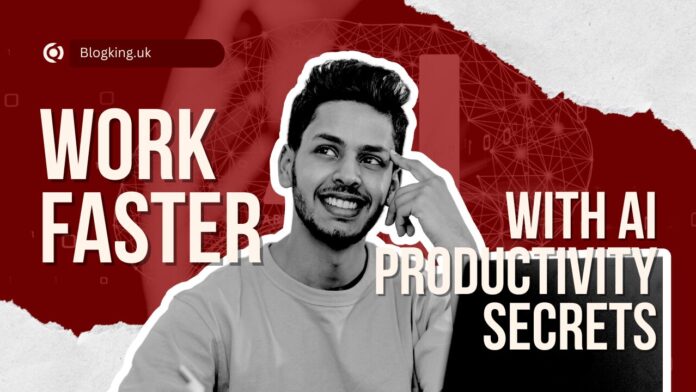Table of Contents
Introduction
Ever feel like your brain’s on overload—constantly buzzing but never really focused?
Yep, you’re not imagining it. In 2025, we’re more plugged in than ever. From checking notifications before we’re even out of bed to scrolling through emails at dinner, screens have quietly taken over every moment of our day.
We’ve heard it before: “Just unplug.” But let’s be honest—completely going offline isn’t always realistic, especially when work, social life, and even relaxation revolve around tech.
That’s where something new is catching on: Micro-Tech Fasts.
Think of them as short, intentional breaks from your devices—just long enough to let your brain breathe but not so long that you miss out on real life (or work deadlines).
In this post, we’ll explore how these small breaks can make a big impact on your focus, creativity, and overall peace of mind. Let’s talk about Digital Detox 2.0—and why it might be exactly what you need right now.
What Are Micro-Tech Fasts?
A Simple Concept That Makes a Big Difference
Micro-Tech Fasts are exactly what they sound like: short, scheduled breaks from screens and digital devices. Unlike those full-blown “disconnect for the weekend” detoxes, these are much more doable—even for busy people.
The idea came from the worlds of productivity and behavioral science, where researchers were starting to notice how constantly being online was wrecking our attention spans and stress levels.
What Do These Mini-Detoxes Look Like?
Here are a few real-life examples of micro-tech fasts:
- App-free mornings – No Instagram or email until after breakfast.
- Screenless meals – Actually taste your food (and talk to people!).
- One-hour daily “off” blocks – Choose a time each day to go totally device-free.
- Weekend unplug moments – A couple of hours on a Saturday with no screens—just books, walks, or conversation.
These small resets can help you get back in control of your time and attention without needing a cabin in the woods.
Why Our Brains Are Begging for a Break
What Constant Tech Use Really Does to Us
Every ping, scroll, or swipe lights up your brain’s dopamine centers, kind of like slot machines in your pocket. It feels good in the moment, but over time it makes us more distracted, less patient, and weirdly anxious.
Multitasking with tech—jumping between texts, emails, and tabs—burns through your brain’s energy fast. It overloads your working memory and chips away at your ability to focus deeply or think clearly.
The Power of Pausing
When you step away from screens, even for 10–15 minutes, your brain gets a chance to reset. You stop flooding your system with digital stimulation, which gives your attention span and emotional balance a much-needed break.
It’s like turning off background noise—you suddenly notice your thoughts again. Over time, these small pauses help you feel calmer, sleep better, and actually get more done.
How Micro-Tech Fasts Help You Get More Done (Without Working More)
You Focus Better and Get Into Flow
Ever had one of those work sessions where you were so dialed in, you lost track of time? That’s a “flow state”—and it’s hard to reach when your phone keeps lighting up.
Micro-tech fasts help you create distraction-free pockets of time, which makes it way easier to do deep, meaningful work. Many creatives and entrepreneurs swear by it. Just 60 minutes of focused work with no pings can do more than 3 hours of distracted effort.
You Make Smarter Decisions, Faster
Too much screen time drains your mental battery. It makes switching between tasks harder and decisions feel heavier. But when you take regular breaks from tech, you preserve your brainpower for the stuff that actually matters.
Even a short break before a big meeting or brainstorming session can sharpen your thinking and help you feel more present.
You Feel More Creative and Clear-Headed
Weirdly, some of your best ideas pop up after you’ve walked away from your screen. That’s because your brain kicks into what’s called the “default mode network”—the zone where daydreams and insights live.
Taking time to unplug opens space for new thoughts, unexpected connections, and fresh perspectives. It’s not laziness—it’s creative fuel.
Who’s Doing This? A Look at Real-Life Wins
CEOs, Creators, and High Performers
Big names like Arianna Huffington and Jack Dorsey have spoken about their tech-free routines—whether it’s screen-free bedrooms or unplugged morning walks. They’re not doing this because it’s trendy—they’re doing it because it works.
They know that being offline for a bit helps them show up sharper when they’re back online.
Students and Remote Workers Too
It’s not just CEOs. Freelancers, students, and remote teams are using micro-tech fasts to stay sane. From blocking out two hours of focused writing to turning off phones during lunch, small changes are making a big difference in how people feel and perform.
How You Can Start Micro-Tech Fasting (Without Overhauling Your Life)
Start Small: A Step-by-Step Guide
You don’t need to go full monk mode. Here’s how to ease in:
- Pick one time a day to step away from your devices—just 30 minutes.
- Make it regular—consistency builds the habit.
- Replace screen time with something that recharges you: a walk, journaling, or just quiet time.
- Tell others—let coworkers or family know you’ll be offline during that time.
- Track how you feel—notice the difference in your focus, mood, or energy.
Helpful Tools and Tricks
- Use apps like Forest or Freedom to block distractions.
- Set a phone-free zone—like your dining table or nightstand.
- Create a ritual—light a candle, stretch, or grab a notebook to signal it’s “tech-off” time.
- Be kind to yourself—if you slip, just restart. It’s not about perfection.
Where This Is All Headed
From Trend to Everyday Habit
Micro-tech fasting isn’t just a fad—it’s becoming part of how we live, work, and stay mentally healthy. Some companies are already encouraging device-free focus blocks. Schools are trying “no screen” hours to help kids concentrate.
Soon, we might see wearables tracking not just steps and heart rate, but digital wellness too. Just like we learned to care for our physical health, we’re now learning to care for our attention and mental clarity.
Wrapping It Up: Small Breaks, Big Impact
Let’s face it—tech isn’t going anywhere. But our brains weren’t built for nonstop pings, swipes, and scrolls. Micro-tech fasts are a simple way to take back control—not from technology, but from how it affects us.
You don’t need to disappear into the mountains to feel better.
Just a few minutes a day away from screens can help you focus better, think clearer, and feel more at peace.
So why not try your first micro-fast today?
Put your phone down, take a deep breath, and let your brain catch up with your life.
Conclusion
In a world that’s always on, learning how to switch off—even for a few minutes—can be a game changer. Micro-tech fasts aren’t about rejecting technology. They’re about reconnecting with yourself, your focus, and what really matters.
If you’re ready to feel more clear-headed, less anxious, and truly present in your day-to-day life, these small breaks are a powerful place to start.
Want More Tools to Help You Reclaim Your Focus?
- Subscribe to our Mental Wellness Weekly newsletter for:
- Simple, science-backed tips to reduce digital fatigue
- Quick mental resets you can do anytime, anywhere
- Personal stories and expert insights on balance in a busy world
- First access to challenges, resources, and free downloads




